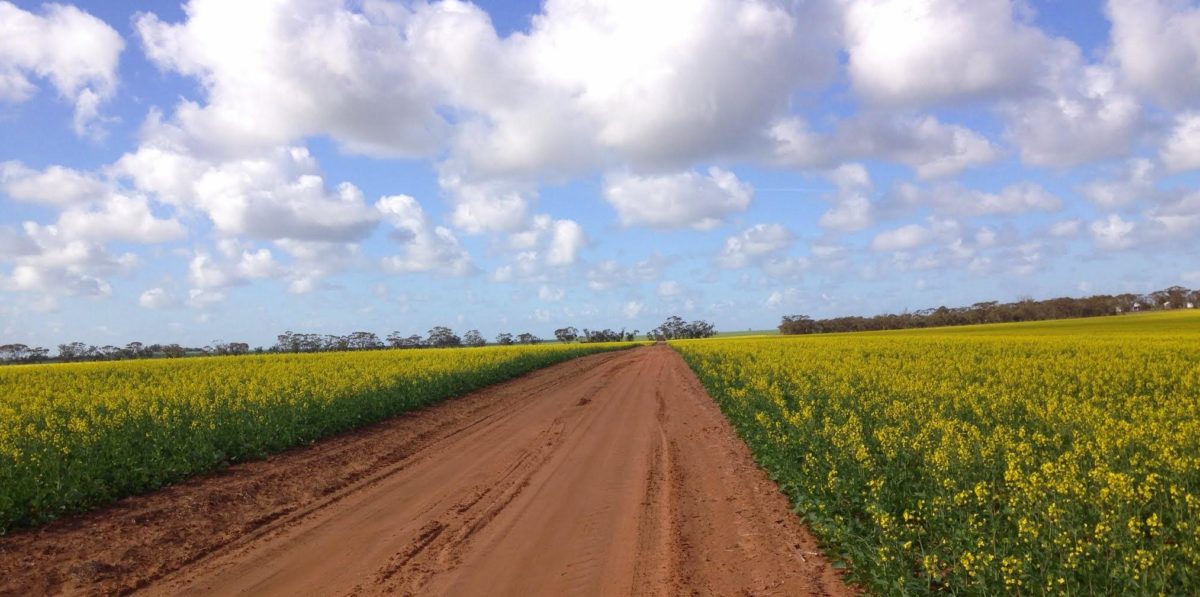September 28, 2016
Robotic innovation is set to drive positive change in the global farming sector by creating more efficient and productive farming businesses, according to Andrew Bate, CEO of Australian agricultural robotics start-up company SwarmFarm Robotics.
Designed for intelligent spot spraying of weeds, particularly herbicide resistant weeds, the SwarmBot 3.0 is in the pre-production prototype stage. And in the lead-up to a commercial release in mid-2017, The central Queensland-based company conducted a world-first demonstration of its fleet of three ‘SwarmBot 3.0’ robots earlier this year.
By offering a commercial contracting service to farmers (so far in the broad acre cereal, cotton, and horticulture sectors) SwarmFarm used the opportunity to introduce and demonstrate the technology.
GAI News spoke with Mr. Bate to learn more about his motivation to drive better farming systems through robotic innovation.
“If we look back in five years’ time and consider what has driven the robotic revolution in agriculture, we will undoubtedly be able to put it down to higher crop yields, more efficient application of farm inputs such as fertilizer and chemical seeds, and better environmental outcomes such as less run-off into our waterways,” Mr. Bate said. “It’s going to be new farming practices enabled by robotics that drive demand for this type of technology, rather than labor savings or automation of existing farm practices.”
“SwarmFarm is about creating new farming systems. By introducing farmers to our technology, we are trying to make them think differently about how they farm. We are out to change the common mindset of being in an ego-driven race to have the biggest machine possible that can farm as many acres as possible in one day.”
“Our key difference is a concept based on swarms of small, light-weight machines that have the benefit of a much slower pace to better detect crop defects while also allowing farmers to collect data on their crop 24/7 and use it make more informative decisions.”
“While big machinery can be up to 48 meters wide and travel from 15km to 30km/hour, our robots are 8 meters wide and travel between zero and 10km/hour and are a fraction of the weight, greatly reducing soil compaction. The slow pace of the robot allows for a super accurate treatment of crops at the same time and place over and over again.”
According to the IDTechEx Research report on Agricultural Robots and Drones 2016-2026, agricultural technologies that enable ultra-precision farming could grow from an existing US$3 billion market to US$10 billion by 2022, dramatically transforming the business of agriculture.
Long Term Vision
Mr. Bate’s long term vision is to set up SwarmFarm to be a global agricultural technology company that builds a whole new ecosystem of farm technology, with the demand for its technology driven by the creation of new farming systems and more efficient farming techniques that address a range of challenges for farmers.
Initially targeting the Australian and USA markets, Mr. Bate expects the starting cost of the SwarmBot 3.0 to be in the vicinity of A$150,000 when first commercialized, making it a more affordable option compared to modern farm machinery than can cost around A$500,000, forcing many farmers to buy second hand models and rely on outdated techniques.
With the Australian government aiming to increase exports by 45 percent by 2025, robotic technology is likely to play a vital role in meeting this benchmark by driving big productivity gains. With high demand from the Chinese consumer for Australia’s clean and fresh products, Mr. Bate said robotic technology will only make it easier for the consumer to trace the product back to its paddock while the risk of contamination will dramatically decrease thanks to more accurate testing for disease and identification of foreign objects.
Put simply, Mr. Bate says SwarmFarm is a platform for agricultural technology and the possibilities of the robot to address challenges for farmers is endless.
“Once we have demonstrated to farmers the concept of our SwarmBot 3.0, we wait for the light bulb moment when the farmer begins to realize the extent of what this robot can do with an array of different technologies attached to it,” he said.
“For example, one farmer needed to solve the problem of snails eating his wheat crop and ending up in the grain at harvest, causing export restrictions. The solution to this problem could be to use the robot to shake the wheat to get the snail off. An additional benefit of the slow pace of the robot means that a camera could be attached to accurately count the number of snails before placing the required number of snail baits to eradicate them. Instead of one size fits all, the tool carrier concept of the robot enables us to tailor the technology to each farmer’s problem.”
Road to Development
As a grain and cattle farmer who is passionate about ensuring a vibrant, economic, and sustainable future for farming, Mr. Bate’s longstanding vision for robotic technology began its conceptualization five years ago through research projects with the University of Sydney and Queensland University of Technology. His agricultural robotic research project was a first for any Australian university and thanks to SwarmFarm’s six partners, including a leading Australian bank and a chemical manufacturer, along with a Commercialization Australia Grant from the Federal Government, Mr. Bate’s vision of developing a commercially viable robot is about to become a reality.
While there is no shortage of agricultural robotic research on a global scale, Mr. Bate said there is a definite lack of uptake to develop the technology.
“We need to collaboratively drive innovation through development, not research,” Mr. Bate said. “Despite all the research available, the jump from research to commercialization still seems too high. We need our Australian agricultural Research and Development companies to come on board and not just fund the research but get behind the agricultural start-ups and support their incredible work on smarter technology. Farmers pay their levies and in return expect more. We want to see the outcomes of the research implemented on-farm.”
A Field of Rivals
Another robotic prototype that could be in the pipeline for commercial development in the next few years is the University of Sydney Australian Centre for Field Robotics’ ‘SwagBot’. Designed to autonomously monitor and herd livestock and inspect crops, the SwagBot was successfully trialed in July in NSW, proving the robot can monitor stock from a distance and maneuver over difficult terrain such as waterways, however it is unlikely the robot would ever replace working dogs or people.
The next stage of research is to enable the robot to monitor an animal’s welfare, particularly during the night. This will involve the robot measuring an animal’s temperature from a distance of 10 metrers and detect any abnormalities in its walking activity. Ultimately, the farmer will be able to grab their smartphone with a map of their farm on it and click on a spot and the robot would be able to go there autonomously. The final product will be solar-powered and would be priced similar to that of a cheap car or all-terrain vehicle.
—
Melissa Lawrence

Let GAI News inform your engagement in the agriculture sector.
GAI News provides crucial and timely news and insight to help you stay ahead of critical agricultural trends through free delivery of two weekly newsletters, Ag Investing Weekly and AgTech Intel.




